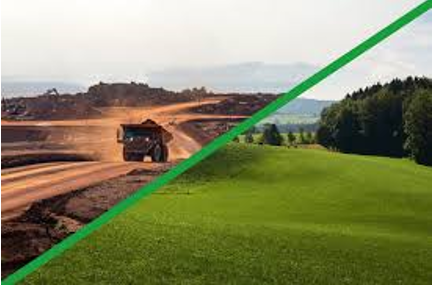i INP-WEALTHPK
Faiza Tehseen
The mining activities in Pakistan have degraded ecosystems, reduced agricultural productivity, and increased environmental risks, necessitating AI integration into post-mining land use to ensure long-term environmental and economic resilience.

Mining Engineer and Chief Executive Officer (CEO) of YSF Mineral Enterprises Muhammad Yousaf said this while talking to WealthPK. “A national framework is necessary to integrate AI into post-mining land use. The government must integrate AI into environmental restoration, public-private partnerships, capacity-building and training, legal framework and incentives, and the development of open open-access environmental database to support AI research and predictive modelling,” he said.
The conventional rehabilitation methods are slow, costly, and lack real-time precision. AI integration into land rehabilitation is necessary to enhance post-mining ecosystem recovery. Yousaf said, “Several land restoration strategies can be simulated for land restoration and identification of the most effective method for a specific site, whether it’s reforestation, soil amendment, or water retention structures. AI-generated topographic models, and local biodiversity database can help build site-specific ecological recovery plans.
It is also helpful in estimating how much carbon the restored land can sequester.” The YSF Mineral Enterprises CEO said AI helps in collecting and interpreting real-time data on soil conditions, hydrology, and erosion patterns. Globally, the mining authorities are using AI-powered platforms for land rehabilitation in most ecologically stressed mining zones. To heal the environmental loss left by decades of unregulated mining, Pakistan also needs to adopt AI.
He said, “In a promising development for climate and biodiversity goals, AI tools are successfully used to map soil degradation, assess water quality, predict native vegetation regrowth, monitor post-rehabilitation outcomes, satellite imagery, drone surveys, and machine learning algorithms to rehabilitate the degraded mining sites.” AI-enhanced rehabilitation can position Pakistan as a competitive player in international voluntary carbon markets.
Accurate carbon sequestration projections verified through satellite-based AI models suggest that the restored mine lands could be monetized through nature-based offset credits,” he added. Talking to WealthPK about the importance of AI-driven land rehab to boost post-mining ecosystem recovery, environmentalist Muhammad Akbar said, “Mining usually causes soil erosion, water contamination, and loss of local biodiversity.
The degraded lands result in long-term economic losses, particularly for the local agriculture-dependent communities. The current rehabilitation relies on manual methods, slowing the recovery efforts.” He said mineral extraction continues to support economic development, and integration of smart technologies into ecological recovery offers a way to reconcile growth with sustainability. AI tools offer predictive insights, automate restoration processes, and ensure cost-effective and sustainable outcomes.
He further said, “AI-based solutions for land rehabilitation include remote sensing and satellite imagery, predictive analytics, automated reforestation and drones to plant native vegetation and monitor growth, small irrigation, and soil sensors. A methodology is necessary to certify carbon credits from mine site rehabilitation, potentially unlocking new revenue for public and private stakeholders.”
Credit: INP-WealthPk



